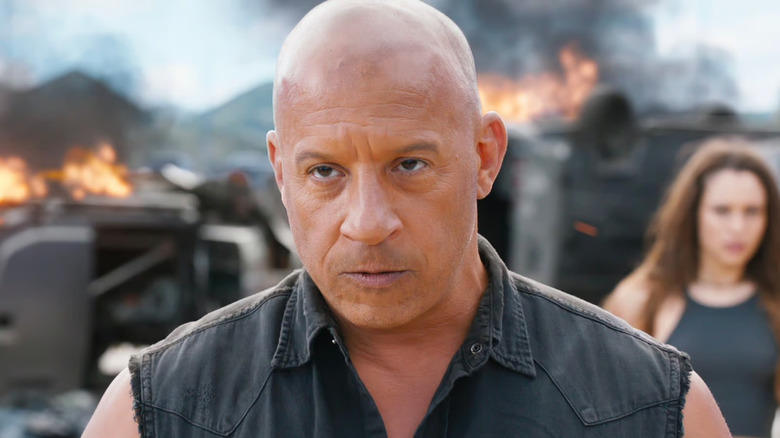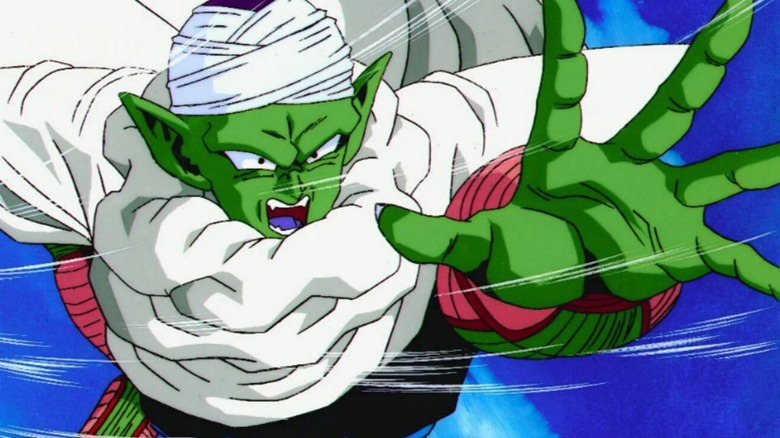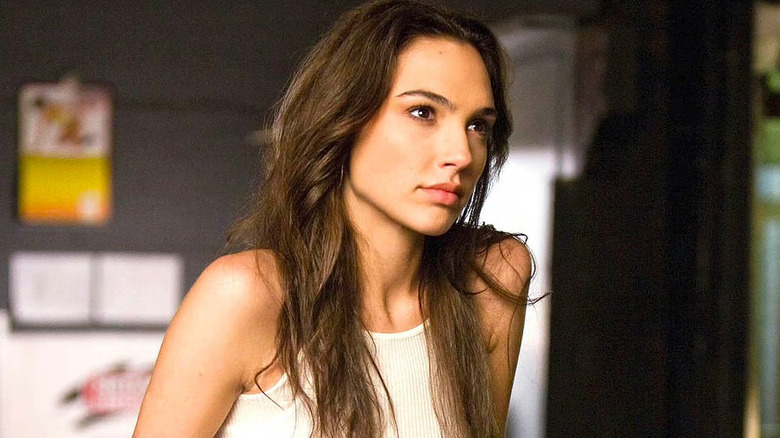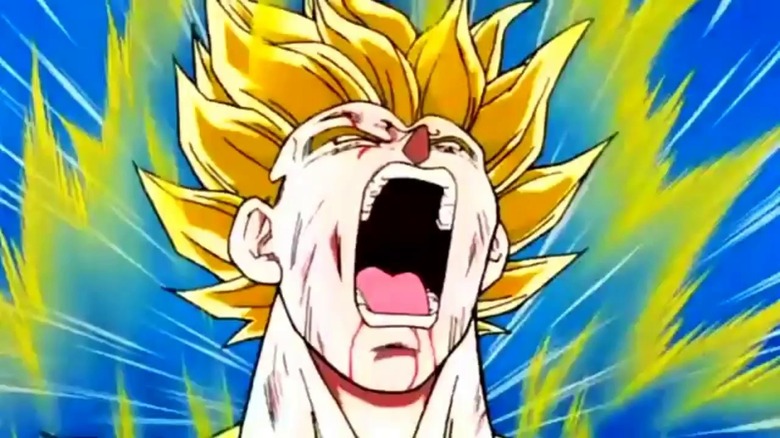Fast X Proves The Fast & Furious Franchise Is Dragon Ball Z With Cars
It's amazing how prominent anime has become in Western culture, and no doubt many people's first experience with this art form was with the ever-popular "Dragon Ball" series, especially "Dragon Ball Z." It's remained one of the most popular anime series for decades, inspiring plenty of others in its wake, but is it possible one of the most successful film franchises out there right now has taken some cues from Goku and his pals?
On the surface, the "Fast & Furious" series and "Dragon Ball Z" are pretty dissimilar. The most recent "Fast & Furious" films show Dom Toretto (Vin Diesel) and his family engaging in high-level espionage while performing insane stunts in their cars. Meanwhile, "Dragon Ball Z" has over-the-top fight sequences between Goku and aliens. However, there's more than meets the eye with these franchises where it's hard not to see the similarities once they're pointed out.
For starters, both series heavily emphasize the importance of family. It's practically a meme at this point that Dom can only talk about family, and Goku's family has grown significantly over the years. The series initially just started with him and his grandfather, Son Gohan. But it's expanded with Bulma as well as Krillin and Master Roshi entering the picture. And the similarities don't end there, especially when taking the most recent "Fast X" into consideration.
Antagonists join the good guys
Family is an integral part of both franchises, but it's interesting to see who ultimately becomes part of that family. While other action flicks may see the bad guy end up dead or in prison by the end of the story, both of these series often have the antagonist join the side of good down the road.
"Fast X" exemplifies this with Dom's brother, Jakob (John Cena). In "F9," he worked for the villain Mr. Nobody, being a real pain in Dom's side. Throughout the events of that movie, Jakob gets double-crossed, so he's primed for a redemption arc in "Fast X." This isn't the first time this has happened in the franchise, either. Deckard Shaw (Jason Statham) used to oppose Dom's team, but now, he's on their side and was even the subject of his own spin-off film.
"Dragon Ball Z" also centers on a team who's pretty forgiving. The most noteworthy example of this is Piccolo, a Namek alien who starts as Goku's rival, but when Gohan is born, Piccolo promises to protect him from evil. The same could be said of Vegeta, another Saiyan who always has a rivalry with Goku but eventually becomes an ally. This also holds true for Android 17 as well as Majin Boo, who was one of the biggest villains in "Dragon Ball Z" only to become comic relief later. Both series show how people can change if you give them a chance.
No one's ever really dead
Death is an important facet of storytelling to signify how big the stakes are. However, "Fast & Furious" and "Dragon Ball" have found success in bringing people back from the dead in various ways.
One of the most significant people to die and then come back in the "Fast & Furious" saga is Letty Ortiz (Michelle Rodriguez), which came as a shock even to the actress. Han (Sung Kang) seemingly died, only for it to be revealed he faked his death during a covert operation for Mr. Nobody. And "Fast X" had a surprise return when Gisele (Gal Gadot) returned at the film's end after she seemingly died years ago.
The same sketchy logic can be seen in "Dragon Ball Z." Goku dies periodically, with many scenes of him in the afterlife, only to come back to the realm of the living. Krillin also dies but is later revived with the Dragon Balls. To its credit, "Dragon Ball Z" does have magic and aliens in the equation, so it's a bit easier to justify such resurrections. But it's clear that if a character is popular enough, these franchises are hesitant to say goodbye fully.
The epicness has only increased
It's a well-worn point by now that "Fast & Furious" has gone off the rails from when it started in 2001. Back then, these movies were about street racers with fairly down-to-earth stories. However, as the series went on, the main crew became globe-trotting super spies doing increasingly insane stunts with cars. "Fast X" ends with Dom driving a car down the Hoover Dam, and it's worth mentioning they went to space in "F9."
Likewise, "Dragon Ball" started relatively grounded. There was naturally some magical realism, but it focused more on realistic martial arts than world-ending attacks. "Dragon Ball Z" took things to another level, with Goku frequently going Super Saiyan to defeat whoever the bad guy might be. Aliens also factor into the mix, which wasn't the case initially, and the franchise has only grown with "Dragon Ball Super" incorporating gods and alternate universes.
Both franchises have seemingly learned that to keep people's attention, the stakes have to be raised in increasingly outlandish ways. This has kept both series fresh as new generations become introduced to them. It's unclear if these similarities are intentional, but it's fun to think about Vin Diesel figuring out what to do with the next "Fast & Furious" installment by watching "Dragon Ball Super: Super Hero."



